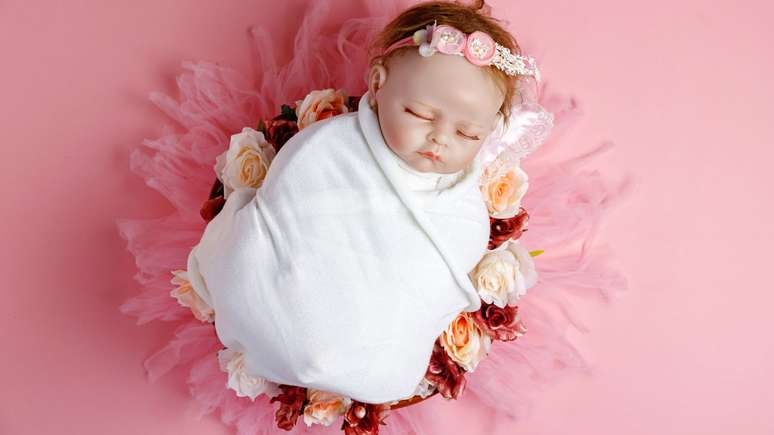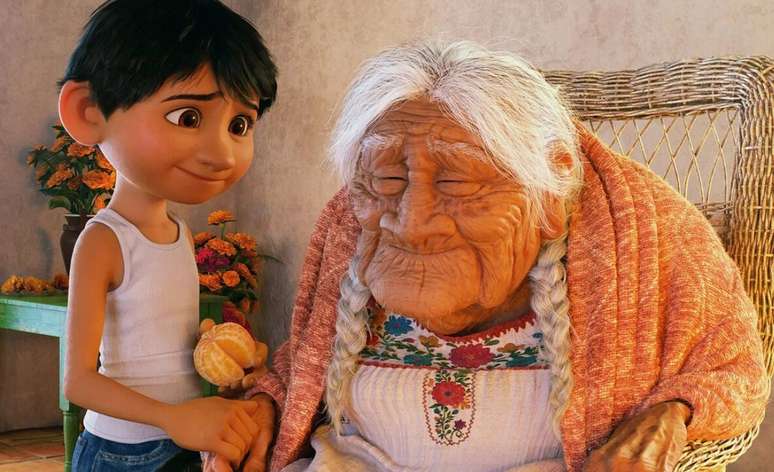They have visible veins, signs of birth, weight compatible with that of a real child, the smell of talc and, in some cases, even internal systems that simulate body temperature
Children reborn They are hyperrealist dolls, handmade to look like real babies. They have visible veins, signs of birth, weight compatible with that of a real child, the smell of talc and, in some cases, even internal systems that simulate body temperature. Emerged in the 90s, in United StatesThis art has conquered the world with the progress of social networks, in which artists and collectors began to show their creations and routines. Initially seen as artistic or collection objects, the reborn They began to occupy other functions: emotional, symbolic and, in some contexts, even therapeutic.
The symbolic function of children reborn
In development psychology, transition objects such as tights and plush to help children manage separations and insecurities. But what happens when an object is no longer a symbolic bridge and starts taking the place of what has been lost or even existed?
This is exactly what we see in many cases with children reborn. Women who have undergone abortions, neonatal losses, hysterectomies, infertility or face the “empty nest” so called after their children grow up, often find in dolls, a way to resign these pains. For these people, keeping one of these is not a joke. It is a conscious attempt or not, to affectionately repair a deep trauma.
Between care and pain: a possible therapeutic tool?
In clinical practice, it is not up to psychiatry to judge or pathologize what it does not understand. There are contexts in which the game of the game can work as an emotional facilitator. In patients with complicated mourning, attachment disorders, dissociative paintings or perinatal depression, the object can represent a safe way to activate emotional bonds or save instinct.
In long -term institutions, in particular with the elderly who live with dementia, clinical relationships suggest that contact with it can arouse memories, reduce agitation and relieve feelings of solitude. The presence of the doll in this context acts as an emotional anchor.
But it is essential to underline: therapeutic use is valid only if mediated by qualified professionals and integrated with a clear therapeutic project. In addition, there is the risk of strengthening delusional and dissociative fantasies or emotional addictions that feed more suffering than they breed.
Children rebornsocial networks and the culture of performance
In recent years, a new level has added to the phenomenon: the impact of social networks. Channels in YouTube and profiles in Instagram Share the maternal routine videos with children reborn: changed diapers, prepared bottles, trolley tours and even birthday parties.
Many of these videos are actually scripts and aesthetic deficiencies designed to increase involvement with the public. In addition to the symbolic or emotional aspect, there is also a commercial strategy here: successful videos sell more dolls, more clothes, more accessories. It is a niche market with faithful followers, active forums and a high added value.
Different profiles
Most of these women are collectors and are in the community with others of the same type. Therefore, we can parallel to men who are car collectors, for example, who gather in events and are part of an entire universe to which the hobby he understands. Care with the doll, in the same way, is part of a playful, organized and conscious universe. But not all cases are so.
In some profiles, the minority of cases, the line between performance and reality is mixed. When emotional investments become exclusive to the detriment of work, social life and autonomy, it is necessary to observe whether this behavior masks a deeper psychic suffering. The social network algorithm strengthens bubbles that validate this imagination as a reality. The phrase “I’m the mother of reborn” Becomes identity. And for some, it replaces a frustrated or wounded maternal function. And it is these cases that we must observe more carefully from a psychic point of view.
The question is not to collect dolls, trolleys or toys – something culturally accepted – included, among adults. The central point is different: at what point, are we exchanged real life with emotional simulations? What place do these fantasies occupy in our daily life?
Another point of view
I spoke Nane RebornsInfluencer and collector of the dolls, which is immersed in this movement. He gave me the following personal testimony on the case: “I am a collector for almost 20 years and I have always liked the dolls, so my passion started when I saw the TV for the first time. In recent days, art has viralized and now the burst of the bubble. However, what is viral is our staging videos and this has caused doubts about people. But it is only a soap fictitious work..
On the other hand, in some cases, children reborn Mimicize an idealized motherhood. They do not cry, do not get sick, do not grow, they do not require renunciations. A plastic maternity without pain and complexity of the real bond.
Reflection
With an opposite, but equally symbolic extreme, it is worth remembering the Japanese phenomenon of adult dolls with which some men have been connected or even married. These are behaviors that, although distinct, raise the same question: what are we trying to replace? These cases should not be seen with derision, but carefully. They make us reflect on contemporary emotional needs, difficulty facing frustration and growing desire for absolute control over the affection. I wish, ironically, excludes the other real.
Extreme clinical cases and ethical dilemmas
In 2013, one case attracted the attention of the British press. A woman, with a story of gestational losses, called the desperate police after the kidnapping of a doll. The ignored nanny had taken him by mistake. The woman, in a state of shock, believed she had taken her son. Even if it seems loaded, the case opens how many children reborn They can occupy an ambiguous place between memory and delusion or/and mourning and elaboration. The toy itself is not pathological, but it can be the reflection of a pain that is still bleeding. And it is up to mental health to evaluate the whole: context, function and frequency and object.
When the cure becomes coaction
In some situations, the gestures of care for children reborn Take on obsessive characteristics. Routine repetition, such as bathroom, change, eating and sleep, becomes anxiolytic function, pushing painful thoughts or emptiness sensations. In depressive paintings, this cure can represent the attempt to face one’s despair.
In addition, there is a dark market around the theme, in which companies promise healing for depression, overcoming abortion or relief for solitude. This is not just misleading, it is not ethical. No doll replaces psychotherapy. No object solves a trauma. Treatment requires human bond, professional listening and often drug intervention.
More listening, less judgment
The phenomenon of children reborn It is not an eccentricity of passage. It extends the emotional wounds of our era: frustrated maternity, unpaid mourning, disconnected affections, silent desires to take care and be careful. Judging without understanding is refusing listening. It is up to mental health professionals to be a clinical but also empathic aspect. What seems strange for some can be, for others, a mental health wire. And in the end, we could not only speak of dolls, but love, absence and human attempts – although imperfect – to heal the invisible.
Source: Terra
Rose James is a Gossipify movie and series reviewer known for her in-depth analysis and unique perspective on the latest releases. With a background in film studies, she provides engaging and informative reviews, and keeps readers up to date with industry trends and emerging talents.







